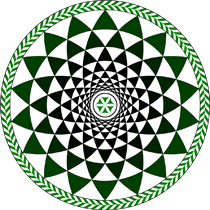Speaker
Dr
Sujit Sasmal
(Faculty of Chemistry, Jagiellonian University, Kraków)
Description
In molecular magnetism, the use of [M(CN)8]n– (M= Mo, W; n=3, 4) ions as building block for the generation of cyanido bridged coordination polymers is growing rapidly due to their potential functionalities [1]. In the paramagnetic [M(CN)8]n– (M= Mo, W; n=3] ions the metal centre provides more diffuse single occupied orbital which causes stronger magnetic exchange interaction [1,2]. On the other hand the diamagnetic [M(CN)8]n– (M= Mo, W; n=4] ions show interesting photoredox properties which make them interesting photomagnetic materials after photo irradiation [3]. Within this family, the CuII–[Mo(CN)8]4– assemblies have been extensively studied. Keeping this point in mind, we have synthesized novel coordination polymer [Cu(1,2-DAP)2Mo(CN)8]n[Cu(1,2-DAP)2H2O]n∙3nH2O (1) (1,2-DAP = 1,2-diaminopropane). The X-ray crystal structure analysis reveals that (1) consists of anionic chains and cationic [Cu(1,2-DAP)2H2O]+ species between the chains. The magnetic properties of (1) is related to two uncoupled paramagnetic copper(II) centers. The solid state UV-vis-NIR absorption spectra have revealed the presence of the band at 430 nm for (1), which can be attributed to the MMCT band. After the irradiation of compound (1) with the light of 430 nm a photo response consisting of increase of magnetic susceptibility and magnetization at 1.8 K has been found.
References
[1] (a) B. Nowicka, T. Korzeniak, O. Stefańczyk, D. Pinkowicz, S. Chorąży, R. Podgajny and B. Sieklucka, Coord. Chem. Rev. 2012, 256, 1946; (b) P. Przychodzeń, T. Korzeniak, R. Podgajny and B. Sieklucka, Coord. Chem. Rev. 2006, 250, 2234; (c) B. Sieklucka, R. Podgajny, P. Przychodzeń and T. Korzeniak, Coord. Chem. Rev. 2005, 249, 2203.
[2] (a) D. Visinescu, C. Desplanches, I. Imaz, V. Bahers,R. Pradhan, F. A. Villamena, P. Guionneau and J.-P. Sutter, J. Am. Chem. Soc. 2006, 128, 10202; (b) L. F. Chibotaru, V. S. Mironov and A. Ceulemans, Angew. Chem., Int. Ed. 2001, 40, 4429.
[3] (a) M. A. Carvajal, M. Reguero and C. de Graaf, Chem. Commun. 2010, 46, 5737; (b) O. Bunau, M.-A. Arrio, Ph. Sainctavit, L. Paulatto, M. Calandra, A. Juhin, V. Marvaud and C. Cartier dit Moulin, J. Phys. Chem. A 2012, 116, 8678; (c) N. Bridonneau, J. Long, J.-L. Cantin, J. von Bardeleben, S. Pillet, E.-E. Bendeif, D. Aravena, E. Ruiz and V. Marvaud, Chem. Commun. 2015, DOI: 10.1039/C5CC01714A.
Author
Dr
Sujit Sasmal
(Faculty of Chemistry, Jagiellonian University, Kraków)
Co-authors
Prof.
Barbara Sieklucka
(Faculty of Chemistry, Jagiellonian University, Kraków)
Dr
Dawid Pinkowicz
(Faculty of Chemistry, Jagiellonian University, Kraków)
Dr
Tomasz Korzeniak
(Faculty of Chemistry, Jagiellonian University, Kraków)
Dr
Wojciech Nitek
(Faculty of Chemistry, Jagiellonian University, Kraków)

